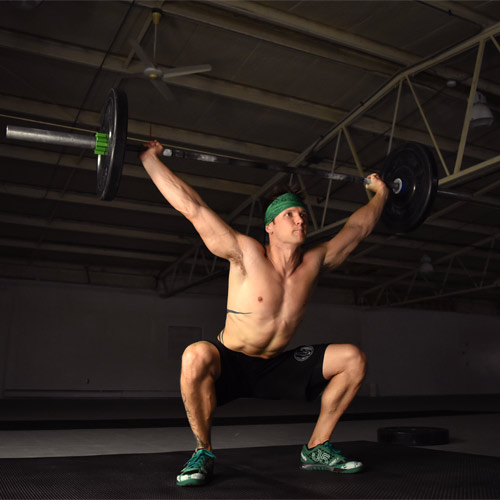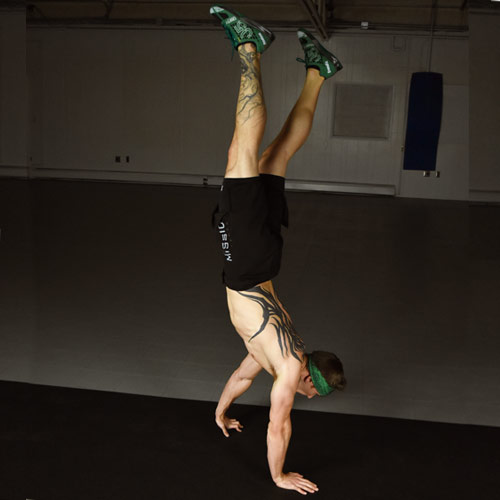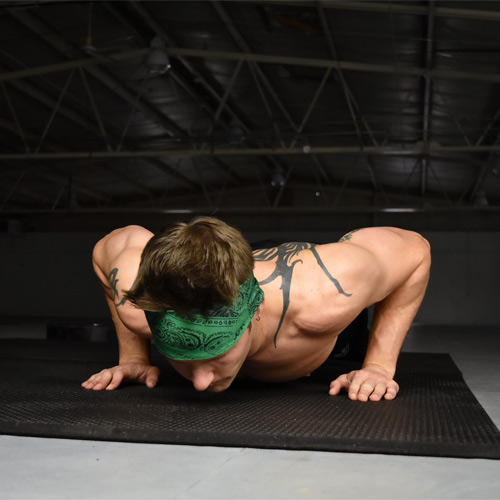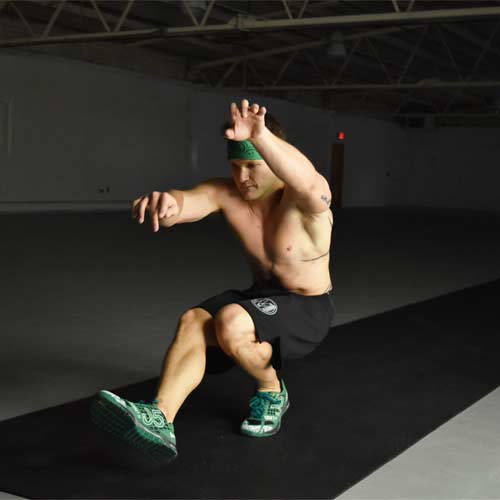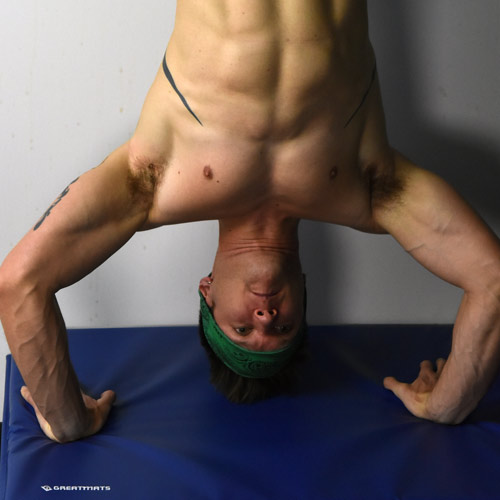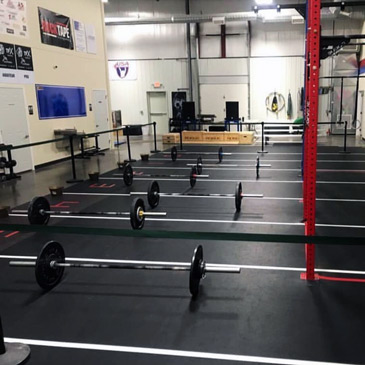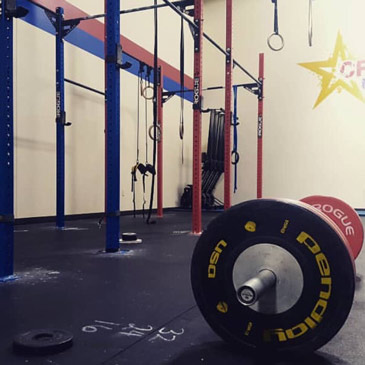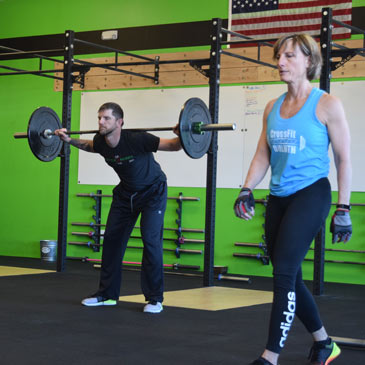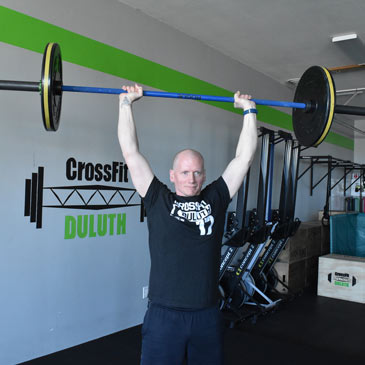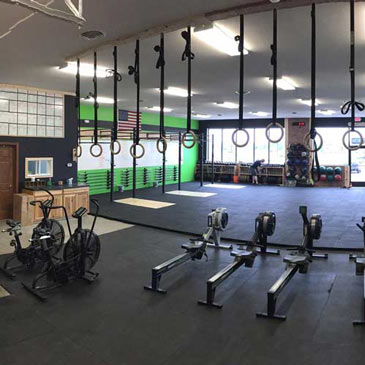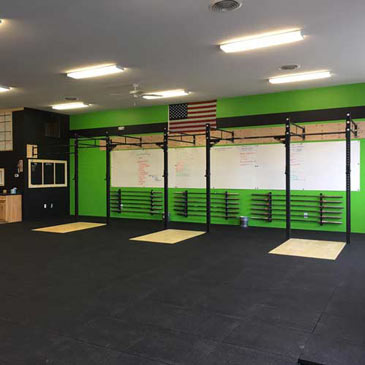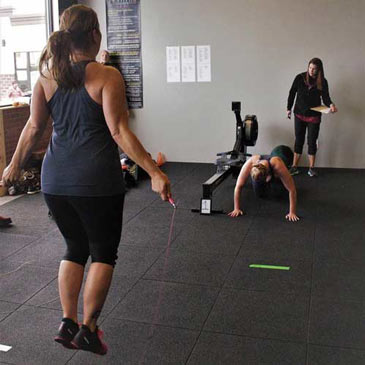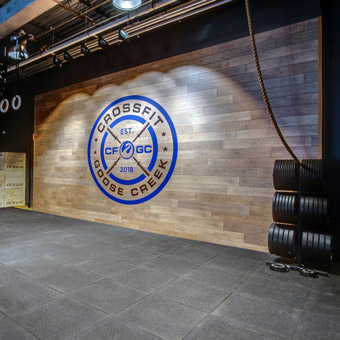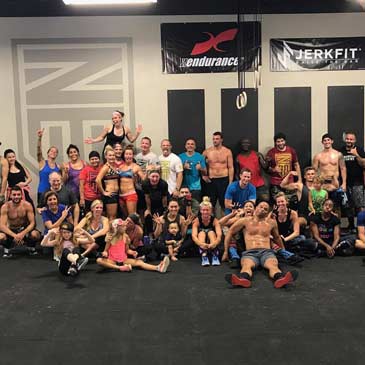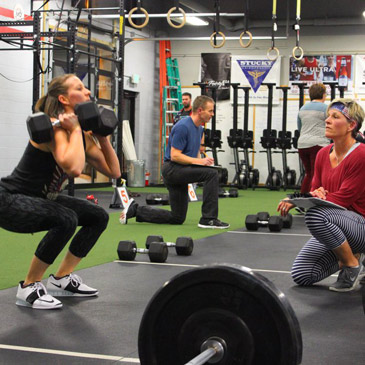What's the Best Floor For a Cross Fitness Gym?
Related Product: Geneva Rubber Tile Black 1/2 Inch x 3x3 Ft.
To find the best flooring for an Xfit gym, you need to pay attention to some of the most important features of these gym floor mats. Because Greatmats carries so many different options for cross-fitness flooring, we can meet whatever needs you have.
Considerations for Cross Fitness Flooring
When comparing different options for floors for cross-fitness workouts, pay attention to these four considerations.Thickness
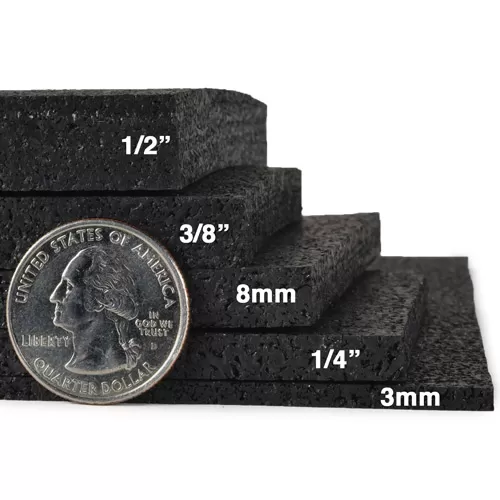
Most cross-fitness rubber products range from 1/4 to 3/4 inches thick. Generally speaking, the thinner the rubber, the less expensive and lighter weight it will be. However, thinner and lighter rubber floors will not absorb nearly as much shock as the thicker varieties and may have more tendency to curl or shift, creating potential hazards.
Surface Texture
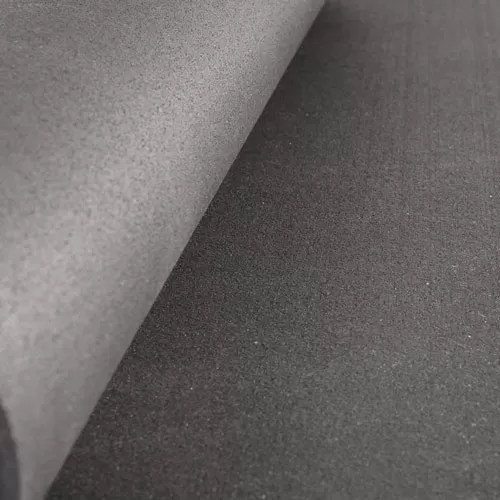
Generally speaking, the smoother the surface of rubber Xfit floors, the better. Many exercises involve contact between bare skin - especially hands and chest - and the floor. Overly textured surfaces can cause the exercises to become uncomfortable and can possibly cause floor burns.
Firmness
Firmer and flatter floors tend to lead to more consistent footing. A small amount of cushion in the floor is handy for jumping exercises, but most movements involve pushing against the floor with a great need for maximum output. The more cushion the floor provides, the less efficient the movement becomes. If you can notice the cushion, it’s probably too much.
Sound Absorption
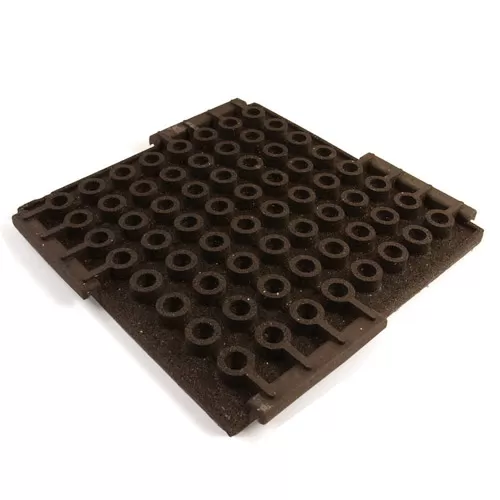
If you are operating an Xfit gym in a strip mall or another setting with adjacent neighbors, you'll want to make sure you have a floor that will keep the dropped weights quiet. Otherwise, you'll be dealing with angry neighbors, landlords, or property managers who are fed up with the thumping. Rubber floors naturally absorb noise, and thicker materials do a better job than thinner materials.
Cross Fitness Flooring Options – Rubber Tile, Mat, or Roll
No matter which form of rubber flooring you choose, it is important to make sure all tiles, mats, or rolls fit tightly together and can be secured to avoid separation.Tiles
Rubber gym tiles provide the greatest versatility and, in most cases, can be installed by one person. One of the biggest advantages of tiles is the multiple thickness options. The smaller square tiles open the door for much greater thickness, perhaps more than 2 inches in some products because smaller tile sizes don’t have too much weight.
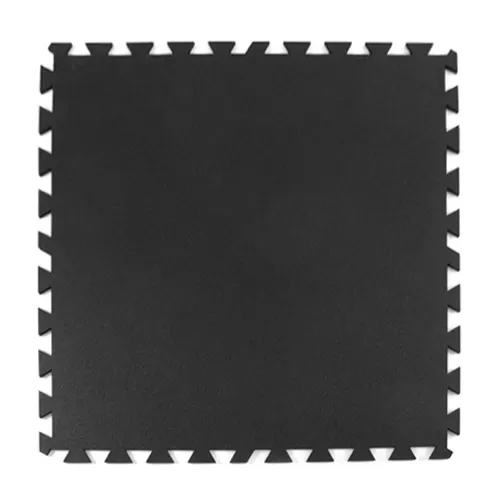
The 3x3 Foot Geneva Rubber Tile product offers impressive value for those who want to cover a large space at an Xfit gymnasium. These 1/2-inch thick tiles make use of interlocking edges to simplify a DIY installation. Border pieces that fit into the interlocking edge create finished edges for a high-end look in the design.
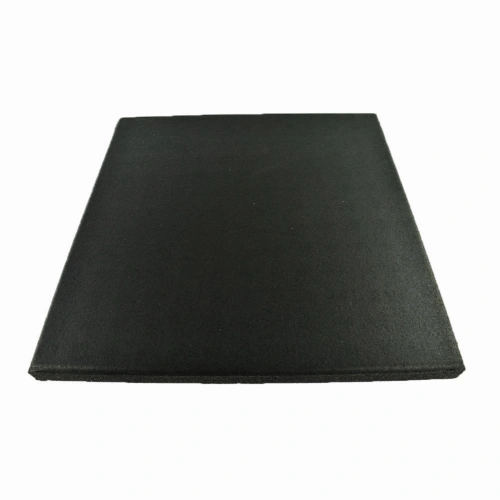
For maximum cushioning and noise absorption in a tile, count on the 2.5-inch thick dBTile Gym Floor Tile. Each tile measures 2x2 feet and offers a highly efficient wear layer that keeps the black tiles looking like new for a long time, even in a busy Xfit fitness center.
Mats
Rubber mats are commonly offered in 4-foot widths and 6- to 8-foot lengths. These mats give you a broad range of thicknesses - typically 1/4 to 3/4 of an inch. They can feature either straight or interlocking edges and offer more versatility than rolls. Rubber cross-fitness mats can be used independently or combined to cover larger areas.
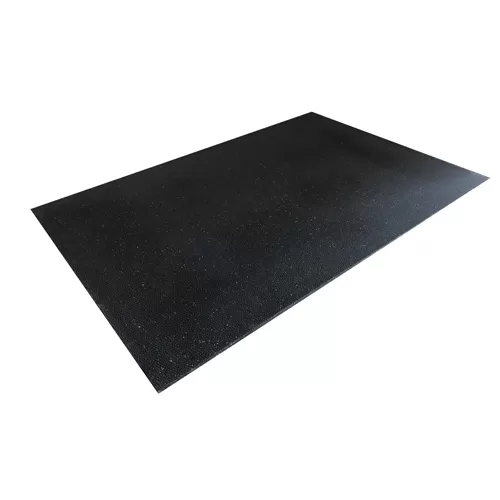
When you want to provide extra cushioning in a particular area of the Xfit workout space, our 4x6 Foot Straight Edge Cobblestone Mat is a popular choice. At 3/4 of an inch in thickness, it has excellent durability and cushioning. Its cobblestone texture surface gives athletes a bit of traction to avoid slips.
Rolls
In most cases, rubber flooring rolls are the least expensive option for cross-fitness gym flooring, especially in large spaces. The rolls cut down on the number of seams and potential tripping hazards and are commonly used to create lanes for competitions.
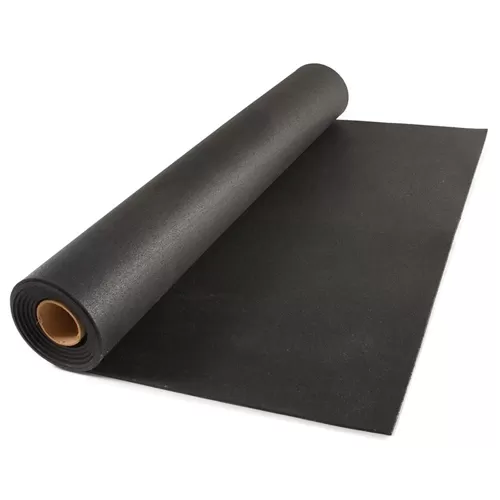
One advantage of our Geneva Rubber Flooring Roll is that you can cover a large space quickly, as it has 4 feet of width with custom lengths available (with a minimum of 25 feet of length). This is a Made in the USA roll that offers slip resistance and excellent durability. However, it only has 8 mm of thickness (about 5/16 of an inch).
